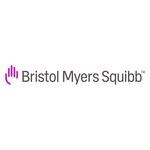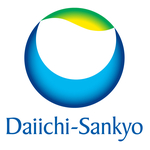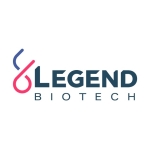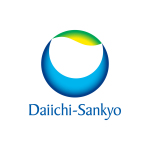Opdivo in combination with chemotherapy and Opdivo plus Yervoy® (ipilimumab) approved based on a Phase 3 trial showing improved overall survival versus chemotherapy alone1,2
Opdivo-based treatments are now approved for five indications in upper gastroesophageal cancers1
PRINCETON, N.J. — (BUSINESS WIRE) — $BMY #CheckMate—Bristol Myers Squibb (NYSE: BMY) today announced that the U.S. Food and Drug Administration (FDA) has approved both Opdivo® (nivolumab) (injection for intravenous use) in combination with fluoropyrimidine- and platinum-containing chemotherapy and Opdivo® plus Yervoy® (ipilimumab) as a first-line treatment for adult patients with unresectable advanced or metastatic esophageal squamous cell carcinoma (ESCC) regardless of PD-L1 status. The approvals are based on the Phase 3 CheckMate -648 trial, which evaluated Opdivo in combination with chemotherapy (n=321) and Opdivo plus Yervoy (n=325) each compared to chemotherapy alone (n=324), and was the largest Phase 3 trial of an immunotherapy in first-line ESCC.1

In the trial, Opdivo in combination with chemotherapy demonstrated superior overall survival (OS) compared to chemotherapy alone, both in all randomized patients, a secondary endpoint, which was hierarchically tested (Hazard Ratio [HR] 0.74, 95% Confidence Interval [CI]: 0.61 to 0.90, P=0.0021) and in patients whose tumors express PD-L1 (≥1%), a primary endpoint (HR 0.54, 95% CI: 0.41 to 0.71, P<0.0001).1,2 In all randomized patients the median OS (mOS) was 13.2 months (95% CI: 11.1 to 15.7) with Opdivo in combination with chemotherapy versus 10.7 months (95% CI: 9.4 to 11.9) with chemotherapy alone.1 In patients whose tumors express PD-L1 (≥1%) the mOS was 15.4 months (95% CI: 11.9 to 19.5) for Opdivo in combination with chemotherapy versus 9.1 months (95% CI: 7.7 to 10) with chemotherapy alone.1 The median progression-free survival (PFS) in all randomized patients, which was a hierarchically tested secondary endpoint, was 5.8 months (95% CI: 5.6 to 7.0) for Opdivo in combination with chemotherapy and 5.6 months (95% CI: 4.3 to 5.9) for chemotherapy alone (HR= 0.81; 95% CI: 0.67 to 0.99, P=not significant). Per pre-specified analysis, PFS did not meet statistical significance.1 The median PFS in patients whose tumors express PD-L1 (≥1%), which was a co-primary endpoint, was 6.9 months (95% CI: 5.7 to 8.3) for Opdivo in combination with chemotherapy and 4.4 months (95% CI: 2.9 to 5.8) for chemotherapy alone (HR 0.65; 95% CI: 0.49 to 0.86, P=0.0023).1
Opdivo plus Yervoy also improved OS compared to chemotherapy in all-randomized patients, a secondary endpoint, which was hierarchically tested (HR 0.78, 95% CI: 0.65 to 0.95, P=0.0110) and patients whose tumors express PD-L1 (≥1%), a primary endpoint (HR 0.64, 95% CI: 0.49 to 0.84, P=0.0010).1,2 The mOS was 12.8 months (95% CI: 11.3 to 15.5) with Opdivo plus Yervoy versus 10.7 months (95% CI: 9.4 to 11.9) with chemotherapy alone in all randomized patients and 13.7 months (95% CI: 11.2 to 17.0) with Opdivo plus Yervoy versus 9.1 months (95% CI: 7.7 to 10) with chemotherapy alone in patients whose tumors express PD-L1 (≥1%).1 The median PFS in patients whose tumors express PD-L1 (≥1%), which was a co-primary endpoint, was 4.0 months (95% CI: 2.4 to 4.9) for Opdivo plus Yervoy and 4.4 months (95% CI: 2.9 to 5.8) for chemotherapy alone (HR 1.02; 95% CI: 0.78 to 1.34, P=not significant). Per pre-specified analysis, PFS did not meet statistical significance.1,2 Median PFS in the PD-L1 (≥1%) population was not statistically significant and therefore it was not hierarchically tested in the all comers population.
Opdivo alone and Opdivo plus Yervoy are associated with the following Warnings and Precautions: severe and fatal immune-mediated adverse reactions including pneumonitis, colitis, hepatitis and hepatotoxicity, endocrinopathies, nephritis and renal dysfunction, dermatologic adverse reactions, other immune-mediated adverse reactions; infusion-related reactions; complications of allogeneic hematopoietic stem cell transplantation (HSCT); embryo-fetal toxicity; and increased mortality in patients with multiple myeloma when Opdivo is added to a thalidomide analogue and dexamethasone, which is not recommended outside of controlled clinical trials.1 Please see the Important Safety Information section below.
“Today brings welcome news for many advanced or metastatic esophageal squamous cell carcinoma patients and oncologists,” said Jaffer A. Ajani, M.D., CheckMate -648 co-first author and lead U.S. investigator, and professor of Gastrointestinal Medical Oncology at The University of Texas MD Anderson Cancer Center. “Unresectable advanced or metastatic esophageal squamous cell carcinoma is a challenging disease, and there’s a need for additional treatment options that may extend survival in the first-line setting.3,4 In the CheckMate -648 trial, two nivolumab-based combinations showed a survival benefit compared to chemotherapy alone, offering new treatment options regardless of PD-L1 status.”1
This application was reviewed under the FDA’s Real-Time Oncology Review (RTOR) pilot program, which aims to ensure that safe and effective treatments are available to patients as early as possible.5
“At Bristol Myers Squibb, we recognize the need that exists for many patients facing upper gastroesophageal cancers, including advanced or metastatic esophageal squamous cell carcinoma, and we are focused on our goal to bring forward new treatment options with proven survival benefits regardless of PD-L1 status and histology,” said Adam Lenkowsky, senior vice president and general manager, U.S., Cardiovascular, Immunology, Oncology, Bristol Myers Squibb.6 “Today’s approvals bring two first-line immunotherapy-based treatment options at once, Opdivo in combination with chemotherapy and Opdivo plus Yervoy as the first dual immunotherapy option, to newly diagnosed patients with unresectable advanced or metastatic esophageal squamous cell carcinoma, further building on the role of Opdivo-based regimens in upper gastroesophageal cancers.”1
About CheckMate -648
CheckMate -648 is a randomized Phase 3 study evaluating Opdivo plus Yervoy or Opdivo in combination with chemotherapy (fluorouracil and cisplatin) against chemotherapy (fluorouracil plus cisplatin) alone in adult patients with previously untreated unresectable advanced, recurrent, or metastatic esophageal squamous cell carcinoma.1,2 The primary endpoints of the trial are overall survival (OS) and progression-free survival (PFS) determined by blinded independent central review (BICR) in patients whose tumors express PD-L1 (≥1%) for both Opdivo-based combinations versus chemotherapy.2 Secondary endpoints of the trial, including OS and PFS as determined by BICR in the all randomized population, were tested hierarchically only if corresponding primary endpoints were significant.1,2
In the Opdivo plus Yervoy arm, patients received treatment with Opdivo 3 mg/kg every 2 weeks and Yervoy 1 mg/kg every 6 weeks up to 2 years or until disease progression or unacceptable toxicity.1,2 In the Opdivo in combination with chemotherapy arm, patients received treatment with Opdivo 240 mg on Day 1 and Day 15, fluorouracil 800 mg/m²/day on Day 1 through Day 5 for five days, and cisplatin 80 mg/m² on Day 1 of a four-week cycle.1,2 Patients were treated with Opdivo until disease progression, unacceptable toxicity, or up to 2 years.1,2 In patients who received Opdivo in combination with chemotherapy and in whom either fluorouracil and/or cisplatin were discontinued, other components of the treatment regimen were allowed to be continued. 2 Patients who discontinued combination therapy because of an adverse reaction attributed to ipilimumab were permitted to continue Opdivo as a single agent.2
Select Safety Profile from CheckMate -648 Study
Opdivo and/or chemotherapy were discontinued in 39% of patients and were delayed in 71% of patients for an adverse reaction.1 Serious adverse reactions occurred in 62% of patients receiving Opdivo in combination with chemotherapy.1 The most frequent (≥2%) serious adverse reactions in patients receiving Opdivo in combination with chemotherapy were pneumonia (11%), dysphagia (7%), esophageal stenosis (2.9%), acute kidney injury (2.9%), and pyrexia (2.3%).1 Fatal adverse reactions occurred in 5 (1.6%) patients treated with Opdivo in combination with chemotherapy; these included pneumonitis, pneumatosis intestinalis, pneumonia, and acute kidney injury.1 The most common (≥20%) adverse reactions in patients treated with Opdivo in combination with chemotherapy were nausea (65%), decreased appetite (51%), fatigue (47%), constipation (44%), stomatitis (44%), diarrhea (29%), and vomiting (23%).1
Opdivo and/or Yervoy were discontinued in 23% of patients and were delayed in 46% of patients for an adverse reaction.1 Serious adverse reactions occurred in 69% of patients receiving Opdivo plus Yervoy.1 The most frequent (≥2%) serious adverse reactions in patients receiving Opdivo plus Yervoy were pneumonia (10%), pyrexia (4.3%), pneumonitis (4%), aspiration pneumonia (3.7%), dysphagia (3.7%), hepatic function abnormal (2.8%), decreased appetite (2.8%), adrenal insufficiency (2.5%), and dehydration (2.5%).1 Fatal adverse reactions occurred in 5 (1.6%) patients treated with Opdivo plus Yervoy; these included pneumonitis, interstitial lung disease, pulmonary embolism, and acute respiratory distress syndrome.1 The most common (≥20%) adverse reactions in patients treated with Opdivo plus Yervoy were rash (31%), fatigue (28%), pyrexia (23%), nausea (22%), diarrhea (22%), and constipation (20%).1
About Esophageal Cancer
In the United States, it is estimated that approximately 20,640 new cases of esophageal cancer will be diagnosed and approximately 16,410 deaths will result from the disease in 2022 alone.7 Esophageal cancer, which can impact the patient’s ability to swallow and eat, is a type of gastroesophageal cancer that starts in the inner layer of the esophagus (the mucosa) and grows.8,9 The mucosa is normally lined with squamous cells.9 Cancer starting in these cells is called squamous cell carcinoma, which is most often found in the upper and middle part of the esophagus, and accounts for less than 30% of esophageal cancers in the United States.9 For about 39% of patients, esophageal cancer is diagnosed in the advanced stage, which is typically harder to treat.10
INDICATIONS
OPDIVO® (nivolumab) is indicated for the treatment of adult patients with unresectable advanced, recurrent or metastatic esophageal squamous cell carcinoma (ESCC) after prior fluoropyrimidine- and platinum-based chemotherapy.
OPDIVO® (nivolumab) is indicated for the adjuvant treatment of completely resected esophageal or gastroesophageal junction cancer with residual pathologic disease in adult patients who have received neoadjuvant chemoradiotherapy (CRT).
OPDIVO® (nivolumab), in combination with fluoropyrimidine- and platinum-containing chemotherapy, is indicated for the first-line treatment of adult patients with unresectable advanced or metastatic esophageal squamous cell carcinoma (ESCC).
OPDIVO® (nivolumab), in combination with ipilimumab, is indicated for the first-line treatment of adult patients with unresectable advanced or metastatic esophageal squamous cell carcinoma (ESCC).
OPDIVO® (nivolumab), in combination with fluoropyrimidine- and platinum- containing chemotherapy, is indicated for the treatment of adult patients with advanced or metastatic gastric cancer, gastroesophageal junction cancer, and esophageal adenocarcinoma.
IMPORTANT SAFETY INFORMATION
Severe and Fatal Immune-Mediated Adverse Reactions
Immune-mediated adverse reactions listed herein may not include all possible severe and fatal immune-mediated adverse reactions.
Immune-mediated adverse reactions, which may be severe or fatal, can occur in any organ system or tissue. While immune-mediated adverse reactions usually manifest during treatment, they can also occur after discontinuation of OPDIVO or YERVOY. Early identification and management are essential to ensure safe use of OPDIVO and YERVOY. Monitor for signs and symptoms that may be clinical manifestations of underlying immune-mediated adverse reactions. Evaluate clinical chemistries including liver enzymes, creatinine, adrenocorticotropic hormone (ACTH) level, and thyroid function at baseline and periodically during treatment with OPDIVO and before each dose of YERVOY. In cases of suspected immune-mediated adverse reactions, initiate appropriate workup to exclude alternative etiologies, including infection. Institute medical management promptly, including specialty consultation as appropriate.
Withhold or permanently discontinue OPDIVO and YERVOY depending on severity (please see section 2 Dosage and Administration in the accompanying Full Prescribing Information). In general, if OPDIVO or YERVOY interruption or discontinuation is required, administer systemic corticosteroid therapy (1 to 2 mg/kg/day prednisone or equivalent) until improvement to Grade 1 or less. Upon improvement to Grade 1 or less, initiate corticosteroid taper and continue to taper over at least 1 month. Consider administration of other systemic immunosuppressants in patients whose immune-mediated adverse reactions are not controlled with corticosteroid therapy. Toxicity management guidelines for adverse reactions that do not necessarily require systemic steroids (e.g., endocrinopathies and dermatologic reactions) are discussed below.
Immune-Mediated Pneumonitis
OPDIVO and YERVOY can cause immune-mediated pneumonitis. The incidence of pneumonitis is higher in patients who have received prior thoracic radiation. In patients receiving OPDIVO monotherapy, immune-mediated pneumonitis occurred in 3.1% (61/1994) of patients, including Grade 4 (<0.1%), Grade 3 (0.9%), and Grade 2 (2.1%).
Immune-Mediated Colitis
OPDIVO and YERVOY can cause immune-mediated colitis, which may be fatal. A common symptom included in the definition of colitis was diarrhea. Cytomegalovirus (CMV) infection/reactivation has been reported in patients with corticosteroid-refractory immune-mediated colitis. In cases of corticosteroid-refractory colitis, consider repeating infectious workup to exclude alternative etiologies. In patients receiving OPDIVO monotherapy, immune-mediated colitis occurred in 2.9% (58/1994) of patients, including Grade 3 (1.7%) and Grade 2 (1%).
Immune-Mediated Hepatitis and Hepatotoxicity
OPDIVO and YERVOY can cause immune-mediated hepatitis. In patients receiving OPDIVO monotherapy, immune-mediated hepatitis occurred in 1.8% (35/1994) of patients, including Grade 4 (0.2%), Grade 3 (1.3%), and Grade 2 (0.4%).
Immune-Mediated Endocrinopathies
OPDIVO and YERVOY can cause primary or secondary adrenal insufficiency, immune-mediated hypophysitis, immune-mediated thyroid disorders, and Type 1 diabetes mellitus, which can present with diabetic ketoacidosis. Withhold OPDIVO and YERVOY depending on severity (please see section 2 Dosage and Administration in the accompanying Full Prescribing Information). For Grade 2 or higher adrenal insufficiency, initiate symptomatic treatment, including hormone replacement as clinically indicated. Hypophysitis can present with acute symptoms associated with mass effect such as headache, photophobia, or visual field defects. Hypophysitis can cause hypopituitarism; initiate hormone replacement as clinically indicated. Thyroiditis can present with or without endocrinopathy. Hypothyroidism can follow hyperthyroidism; initiate hormone replacement or medical management as clinically indicated. Monitor patients for hyperglycemia or other signs and symptoms of diabetes; initiate treatment with insulin as clinically indicated.
In patients receiving OPDIVO monotherapy, adrenal insufficiency occurred in 1% (20/1994), including Grade 3 (0.4%) and Grade 2 (0.6%).
In patients receiving OPDIVO monotherapy, hypophysitis occurred in 0.6% (12/1994) of patients, including Grade 3 (0.2%) and Grade 2 (0.3%).
In patients receiving OPDIVO monotherapy, thyroiditis occurred in 0.6% (12/1994) of patients, including Grade 2 (0.2%).
In patients receiving OPDIVO monotherapy, hyperthyroidism occurred in 2.7% (54/1994) of patients, including Grade 3 (<0.1%) and Grade 2 (1.2%).
In patients receiving OPDIVO monotherapy, hypothyroidism occurred in 8% (163/1994) of patients, including Grade 3 (0.2%) and Grade 2 (4.8%).
In patients receiving OPDIVO monotherapy, diabetes occurred in 0.9% (17/1994) of patients, including Grade 3 (0.4%) and Grade 2 (0.3%), and 2 cases of diabetic ketoacidosis.
Immune-Mediated Nephritis with Renal Dysfunction
OPDIVO and YERVOY can cause immune-mediated nephritis. In patients receiving OPDIVO monotherapy, immune-mediated nephritis and renal dysfunction occurred in 1.2% (23/1994) of patients, including Grade 4 (<0.1%), Grade 3 (0.5%), and Grade 2 (0.6%).
Immune-Mediated Dermatologic Adverse Reactions
OPDIVO can cause immune-mediated rash or dermatitis. Exfoliative dermatitis, including Stevens-Johnson syndrome (SJS), toxic epidermal necrolysis (TEN), and drug rash with eosinophilia and systemic symptoms (DRESS) has occurred with PD-1/PD-L1 blocking antibodies. Topical emollients and/or topical corticosteroids may be adequate to treat mild to moderate nonexfoliative rashes.
YERVOY can cause immune-mediated rash or dermatitis, including bullous and exfoliative dermatitis, SJS, TEN, and DRESS. Topical emollients and/or topical corticosteroids may be adequate to treat mild to moderate non-bullous/exfoliative rashes.
Withhold or permanently discontinue OPDIVO and YERVOY depending on severity (please see section 2 Dosage and Administration in the accompanying Full Prescribing Information).
In patients receiving OPDIVO monotherapy, immune-mediated rash occurred in 9% (171/1994) of patients, including Grade 3 (1.1%) and Grade 2 (2.2%).
Other Immune-Mediated Adverse Reactions
The following clinically significant immune-mediated adverse reactions occurred at an incidence of <1% (unless otherwise noted) in patients who received OPDIVO monotherapy or OPDIVO in combination with YERVOY or were reported with the use of other PD-1/PD-L1 blocking antibodies. Severe or fatal cases have been reported for some of these adverse reactions: cardiac/vascular: myocarditis, pericarditis, vasculitis; nervous system: meningitis, encephalitis, myelitis and demyelination, myasthenic syndrome/myasthenia gravis (including exacerbation), Guillain-Barré syndrome, nerve paresis, autoimmune neuropathy; ocular: uveitis, iritis, and other ocular inflammatory toxicities can occur; gastrointestinal: pancreatitis to include increases in serum amylase and lipase levels, gastritis, duodenitis; musculoskeletal and connective tissue: myositis/polymyositis, rhabdomyolysis, and associated sequelae including renal failure, arthritis, polymyalgia rheumatica; endocrine: hypoparathyroidism; other (hematologic/immune): hemolytic anemia, aplastic anemia, hemophagocytic lymphohistiocytosis (HLH), systemic inflammatory response syndrome, histiocytic necrotizing lymphadenitis (Kikuchi lymphadenitis), sarcoidosis, immune thrombocytopenic purpura, solid organ transplant rejection.
In addition to the immune-mediated adverse reactions listed above, across clinical trials of YERVOY monotherapy or in combination with OPDIVO, the following clinically significant immune-mediated adverse reactions, some with fatal outcome, occurred in <1% of patients unless otherwise specified: nervous system: autoimmune neuropathy (2%), myasthenic syndrome/myasthenia gravis, motor dysfunction; cardiovascular: angiopathy, temporal arteritis; ocular: blepharitis, episcleritis, orbital myositis, scleritis; gastrointestinal: pancreatitis (1.3%); other (hematologic/immune): conjunctivitis, cytopenias (2.5%), eosinophilia (2.1%), erythema multiforme, hypersensitivity vasculitis, neurosensory hypoacusis, psoriasis.
Some ocular IMAR cases can be associated with retinal detachment. Various grades of visual impairment, including blindness, can occur. If uveitis occurs in combination with other immune-mediated adverse reactions, consider a Vogt-Koyanagi-Harada–like syndrome, which has been observed in patients receiving OPDIVO and YERVOY, as this may require treatment with systemic corticosteroids to reduce the risk of permanent vision loss.
Infusion-Related Reactions
OPDIVO and YERVOY can cause severe infusion-related reactions. Discontinue OPDIVO and YERVOY in patients with severe (Grade 3) or life-threatening (Grade 4) infusion-related reactions. Interrupt or slow the rate of infusion in patients with mild (Grade 1) or moderate (Grade 2) infusion-related reactions. In patients receiving OPDIVO monotherapy as a 60-minute infusion, infusion-related reactions occurred in 6.4% (127/1994) of patients. In a separate trial in which patients received OPDIVO monotherapy as a 60-minute infusion or a 30-minute infusion, infusion-related reactions occurred in 2.2% (8/368) and 2.7% (10/369) of patients, respectively. Additionally, 0.5% (2/368) and 1.4% (5/369) of patients, respectively, experienced adverse reactions within 48 hours of infusion that led to dose delay, permanent discontinuation or withholding of OPDIVO.
Complications of Allogeneic Hematopoietic Stem Cell Transplantation
Fatal and other serious complications can occur in patients who receive allogeneic hematopoietic stem cell transplantation (HSCT) before or after being treated with OPDIVO or YERVOY. Transplant-related complications include hyperacute graft-versus-host-disease (GVHD), acute GVHD, chronic GVHD, hepatic veno-occlusive disease (VOD) after reduced intensity conditioning, and steroid-requiring febrile syndrome (without an identified infectious cause). These complications may occur despite intervening therapy between OPDIVO or YERVOY and allogeneic HSCT.
Follow patients closely for evidence of transplant-related complications and intervene promptly. Consider the benefit versus risks of treatment with OPDIVO and YERVOY prior to or after an allogeneic HSCT.
Embryo-Fetal Toxicity
Based on its mechanism of action and findings from animal studies, OPDIVO and YERVOY can cause fetal harm when administered to a pregnant woman. The effects of YERVOY are likely to be greater during the second and third trimesters of pregnancy. Advise pregnant women of the potential risk to a fetus. Advise females of reproductive potential to use effective contraception during treatment with OPDIVO and YERVOY and for at least 5 months after the last dose.
Increased Mortality in Patients with Multiple Myeloma when OPDIVO is Added to a Thalidomide Analogue and Dexamethasone
In randomized clinical trials in patients with multiple myeloma, the addition of OPDIVO to a thalidomide analogue plus dexamethasone resulted in increased mortality. Treatment of patients with multiple myeloma with a PD-1 or PD-L1 blocking antibody in combination with a thalidomide analogue plus dexamethasone is not recommended outside of controlled clinical trials.
Lactation
There are no data on the presence of OPDIVO or YERVOY in human milk, the effects on the breastfed child, or the effects on milk production.
Contacts
Bristol Myers Squibb
Media Inquiries:
media@bms.com
Investors:
investor.relations@bms.com
Read full story here











